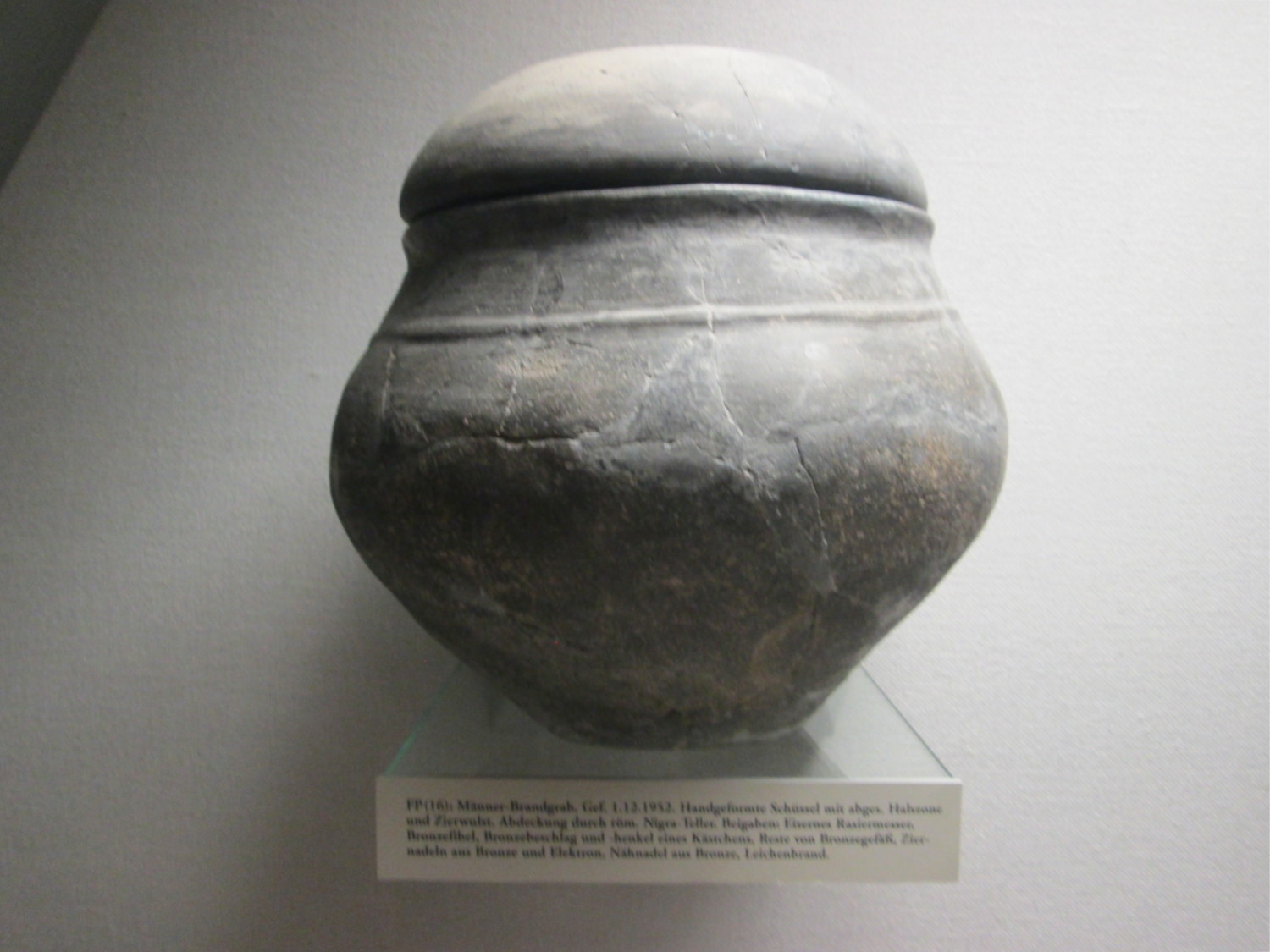|
Melchior Goldast
Melchior Goldast von Haiminsfeld (Goldastus) (6 January 1576 or 1578, Switzerland – Gießen, Germany, 1635) was a Swiss jurist and an industrious though uncritical collector of documents relating to the Holy Roman Empire, medieval history and constitution of Germany. He was a Calvinist writer of note. Life He was born to poor Protestant parents near Bischofszell, in the Switzerland, Swiss canton of Thurgau. His university career, first at Ingolstadt (1595–1596) and then at Altdorf bei Nürnberg (1597–1598), was cut short by his poverty, from which he suffered all his life and which was the main cause of his wanderings. In 1598, he found a rich protector in Bartholomaeus Schobinger of St. Gallen, St. Gall, who enabled him to study at St. Gall (where he first became interested in medieval documents, which abound in the Abbey of St. Gall) and elsewhere in Switzerland. The year before his patron's death in 1604, he became secretary to Henri de La Tour d'Auvergne, vicomte de Turenn ... [...More Info...] [...Related Items...] OR: [Wikipedia] [Google] [Baidu] |
Switzerland
Switzerland, officially the Swiss Confederation, is a landlocked country located in west-central Europe. It is bordered by Italy to the south, France to the west, Germany to the north, and Austria and Liechtenstein to the east. Switzerland is geographically divided among the Swiss Plateau, the Swiss Alps, Alps and the Jura Mountains, Jura; the Alps occupy the greater part of the territory, whereas most of the country's Demographics of Switzerland, 9 million people are concentrated on the plateau, which hosts List of cities in Switzerland, its largest cities and economic centres, including Zurich, Geneva, and Lausanne. Switzerland is a federal republic composed of Cantons of Switzerland, 26 cantons, with federal authorities based in Bern. It has four main linguistic and cultural regions: German, French, Italian and Romansh language, Romansh. Although most Swiss are German-speaking, national identity is fairly cohesive, being rooted in a common historical background, shared ... [...More Info...] [...Related Items...] OR: [Wikipedia] [Google] [Baidu] |
Thirty Years War
The Thirty Years' War, fought primarily in Central Europe between 1618 and 1648, was one of the most destructive conflicts in European history. An estimated 4.5 to 8 million soldiers and civilians died from battle, famine, or disease, while parts of Germany reported population declines of over 50%. Related conflicts include the Eighty Years' War, the War of the Mantuan Succession, the Franco-Spanish War, the Torstenson War, the Dutch-Portuguese War, and the Portuguese Restoration War. The war had its origins in the 16th-century Reformation, which led to religious conflict within the Holy Roman Empire. The 1555 Peace of Augsburg attempted to resolve this by dividing the Empire into Catholic and Lutheran states, but the settlement was destabilised by the subsequent expansion of Protestantism beyond these boundaries. Combined with differences over the limits of imperial authority, religion was thus an important factor in starting the war. However, its scope and extent wa ... [...More Info...] [...Related Items...] OR: [Wikipedia] [Google] [Baidu] |
Willibald Pirckheimer
Willibald Pirckheimer (5 December 1470 – 22 December 1530) was a German Renaissance lawyer, author and Renaissance humanist, a wealthy and prominent figure in Nuremberg in the 16th century, imperial counsellor and a member of the governing City Council for two periods. One of the most important cultural patrons of Germany in his own right, he was the closest friend of the artist Albrecht Dürer, who made a number of portraits of him, and a close friend of the great humanist and theologian Desiderius Erasmus, Erasmus. Biography Born in Eichstätt, in the Bishopric of Eichstätt, the son of a lawyer, Dr. Johannes Pirckheimer, he was educated in Italy, studying law at Padua and Pavia for seven years. His wife was called Cresencia, and they had at least a daughter, Felicitas. His elder sister Caritas Pirckheimer, Caritas (1467–1532) was Abbess of St Clare's Franciscan convent in Nuremberg (also in effect a girls' school for the city's upper class) and was also a gifted classical ... [...More Info...] [...Related Items...] OR: [Wikipedia] [Google] [Baidu] |
Jacques Auguste De Thou
Jacques Auguste de Thou (sometimes known by the Latin version of his name Thuanus) (8 October 1553, Paris – 7 May 1617, Paris) was a French historian, book collector and president of the Parlement of Paris. Life Jacques Auguste de Thou was the grandson of , president of the Parlement of Paris (d. 1544), and the third son of Christophe de Thou (d. 1582), '' premier président'' of the same ''parlement'', who had had ambitions to produce a history of France. His uncle was Nicolas de Thou, Bishop of Chartres (1573–1598). With this family background, he developed a love of literature, a firm but tolerant piety, and a loyalty to the Crown. At seventeen, he began his studies in law, first at Orléans, later at Bourges, where he made the acquaintance of François Hotman, and finally at Valence, where he had Jacques Cujas for his teacher and Joseph Justus Scaliger as a friend. He was at first intended for the Church; he received the minor orders, and on the appointment of ... [...More Info...] [...Related Items...] OR: [Wikipedia] [Google] [Baidu] |
Alamanni
The Alemanni or Alamanni were a confederation of Germanic tribes * * * on the Upper Rhine River during the first millennium. First mentioned by Cassius Dio in the context of the campaign of Roman emperor Caracalla of 213 CE, the Alemanni captured the in 260, and later expanded into present-day Alsace and northern Switzerland, leading to the establishment of the Old High German language in those regions, which by the eighth century were collectively referred to as '' Alamannia''. In 496, the Alemanni were conquered by the Frankish leader Clovis and incorporated into his dominions. Mentioned as still pagan allies of the Christian Franks, the Alemanni were gradually Christianized during the seventh century. The is a record of their customary law during this period. Until the eighth century, Frankish suzerainty over Alemannia was mostly nominal. After an uprising by Theudebald, Duke of Alamannia, however, Carloman executed the Alamannic nobility and installed Frankish ... [...More Info...] [...Related Items...] OR: [Wikipedia] [Google] [Baidu] |
Suevi
file:1st century Germani.png, 300px, The approximate positions of some Germanic peoples reported by Graeco-Roman authors in the 1st century. Suebian peoples in red, and other Irminones in purple. The Suebi (also spelled Suavi, Suevi or Suebians) were a large group of Germanic peoples originally from the Elbe river region in what is now Germany and the Czech Republic. In the early Roman era they included many peoples with their own names such as the Marcomanni, Quadi, Hermunduri, Semnones, and Lombards. New groupings formed later, such as the Alamanni and Bavarians, and two kingdoms in the Migration Period were simply referred to as Suebian. Although Tacitus specified that the Suebian group was not an old tribal group itself, the Suebian peoples are associated by Pliny the Elder with the Irminones, a grouping of Germanic peoples who claimed ancestral connections. Tacitus mentions Suebian languages, and a geographical "Suevia". The Suevians were first mentioned by Julius Caesar i ... [...More Info...] [...Related Items...] OR: [Wikipedia] [Google] [Baidu] |
Tyrol Von Schotten
Tyrol ( ; historically the Tyrole; ; ) is a historical region in the Alps of Northern Italy and western Austria. The area was historically the core of the County of Tyrol, part of the Holy Roman Empire, Austrian Empire and Austria-Hungary, from its formation in the 12th century until 1919. In 1919, following World War I and the dissolution of Austria-Hungary, it was divided into two modern administrative parts through the Treaty of Saint-Germain-en-Laye: * State of Tyrol: Formed through the merger of North and East Tyrol, as part of Austria. * Region of Trentino-Alto Adige: At that time still with Souramont (Cortina d'Ampezzo, Livinallongo del Col di Lana and Colle Santa Lucia) and the municipalities Valvestino, Magasa, and Pedemonte. This was seized in 1918 by the Kingdom of Italy, and since 1946 has been part of the Italian Republic. With the founding of the European region Tyrol-South Tyrol-Trentino, the area has had its own legal entity since 2011. It is known as a ... [...More Info...] [...Related Items...] OR: [Wikipedia] [Google] [Baidu] |
Landgraviate Of Hesse-Darmstadt
The Landgraviate of Hesse-Darmstadt () was a Imperial State, State of the Holy Roman Empire, ruled by a younger branch of the House of Hesse. It was formed in 1567 following the division of the Landgraviate of Hesse among the four sons of Landgrave Philip I, Landgrave of Hesse, Philip I. The residence of the landgraves was in Darmstadt, hence the name. As a result of the Napoleonic Wars, the landgraviate was elevated to the Grand Duchy of Hesse following the Empire's dissolution in 1806. Geography Like many petty German states, the landgraviate comprised a number of disconnected pockets of land (exclaves). These included the southern Starkenburg territory with the Darmstadt residence and the northern province of Upper Hesse with Alsfeld, Giessen, Grünberg, Hesse, Grünberg, the northwestern ''hinterland'' estates around Gladenbach, Biedenkopf and Battenberg, Hesse, Battenberg as well as the exclave of Vöhl in Lower Hesse. History The Landgraviate of Hesse-Darmstadt came into ... [...More Info...] [...Related Items...] OR: [Wikipedia] [Google] [Baidu] |
Elector Of Trier
The elector of Trier was one of the prince-electors of the Holy Roman Empire and, in his capacity as archbishop, administered the Roman Catholic Diocese of Trier, archdiocese of Trier. The territories of the Electorate of Trier, electorate and the archdiocese were not, however, equivalent. History The transient authority of archbishops was not gained without opposition. The German kings Otto IV and Conrad IV in 1308 granted charters to the city of Trier, authorizing the jurisdiction of its archbishop, Baldwin of Luxembourg. This prince, brother of Emperor Henry VII, who ruled from 1307 to 1354, was the real founder of the power of Trier. Although his predecessor, Diether III of Nassau, had left the electorate heavily encumbered with debt, Baldwin raised it to great prosperity with the help of the emperors Henry VII, Louis the Bavarian and Charles IV, to whom he had rendered active political and military support. He enlarged his territory almost to its ultimate extent. He assumed ... [...More Info...] [...Related Items...] OR: [Wikipedia] [Google] [Baidu] |
Ferdinand II, Holy Roman Emperor
Ferdinand II (9 July 1578 – 15 February 1637) was Holy Roman Emperor, King of Bohemia, King of Hungary, Hungary, and List of Croatian monarchs, Croatia from 1619 until his death in 1637. He was the son of Archduke Charles II, Archduke of Austria, Charles II of Inner Austria and Maria Anna of Bavaria (born 1551), Maria of Bavaria, who were devout Catholic Church, Catholics. In 1590, when Ferdinand was 11 years old, they sent him to study at the University of Ingolstadt, Jesuits' college in Ingolstadt because they wanted to isolate him from the Lutheranism, Lutheran nobles. A few months later, his father died, and he inherited Inner Austria–Duchy of Styria, Styria, Duchy of Carinthia, Carinthia, Duchy of Carniola, Carniola and smaller provinces. His cousin, Rudolf II, Holy Roman Emperor, who was the head of the Habsburg family, appointed regents to administer these lands. Ferdinand was installed as the actual ruler of the Inner Austrian provinces in 1596 and 1597. Rudolf II al ... [...More Info...] [...Related Items...] OR: [Wikipedia] [Google] [Baidu] |




